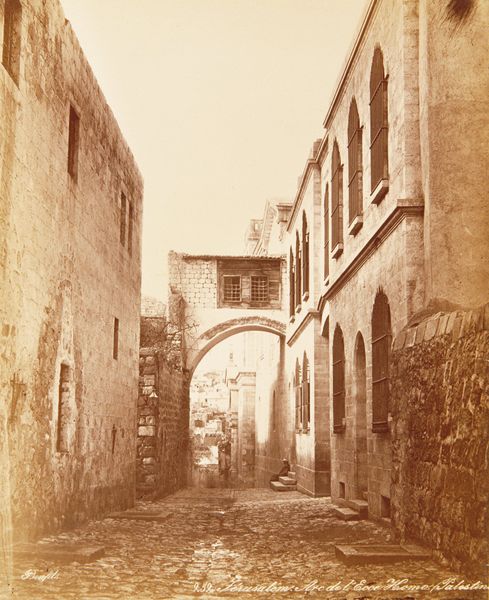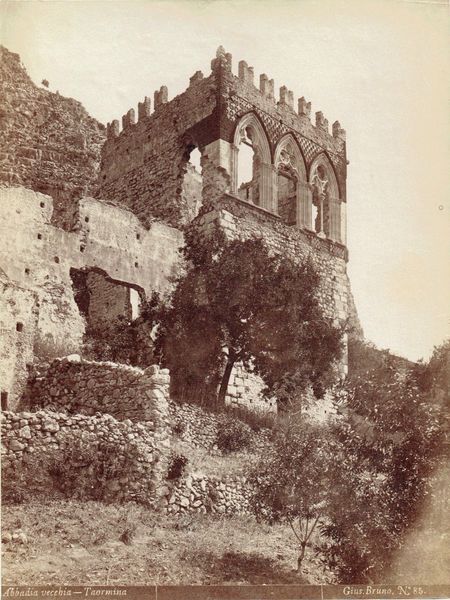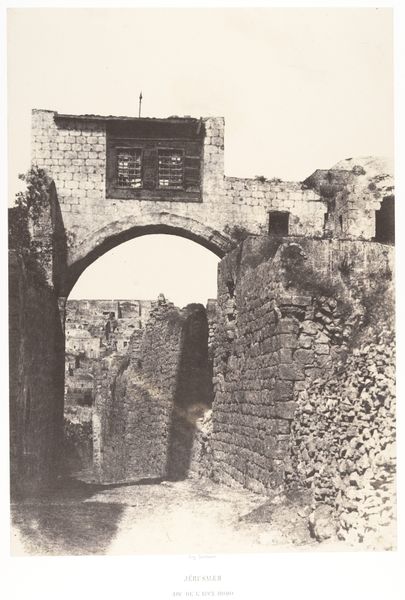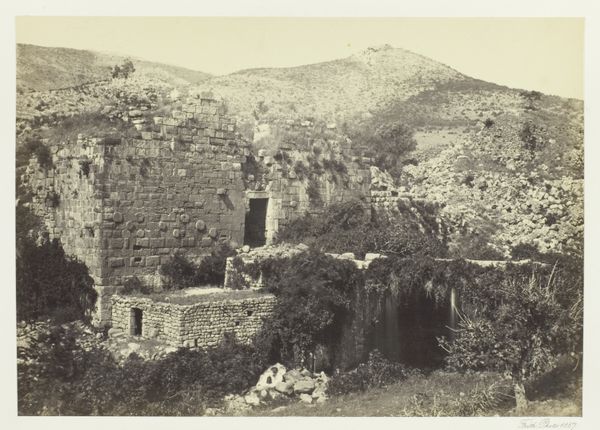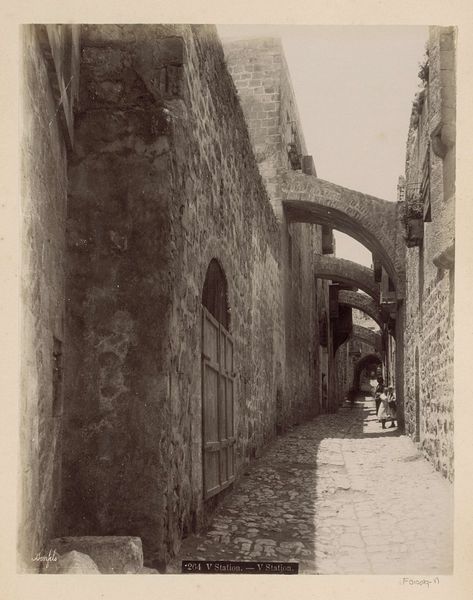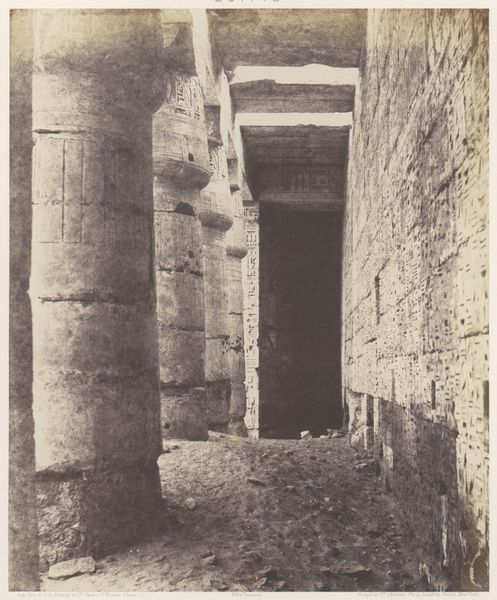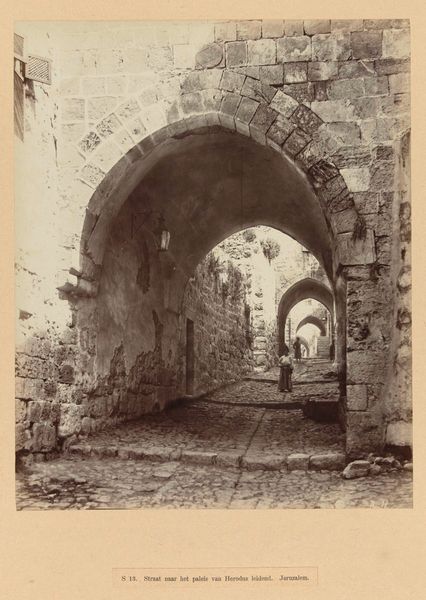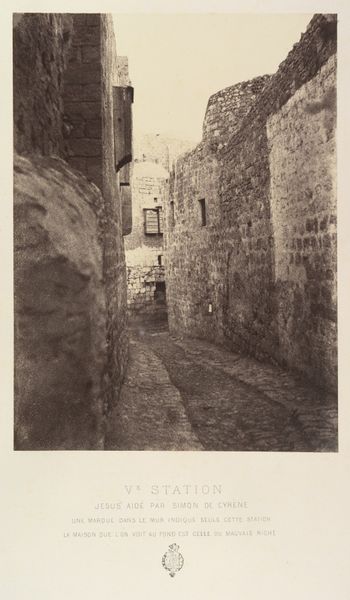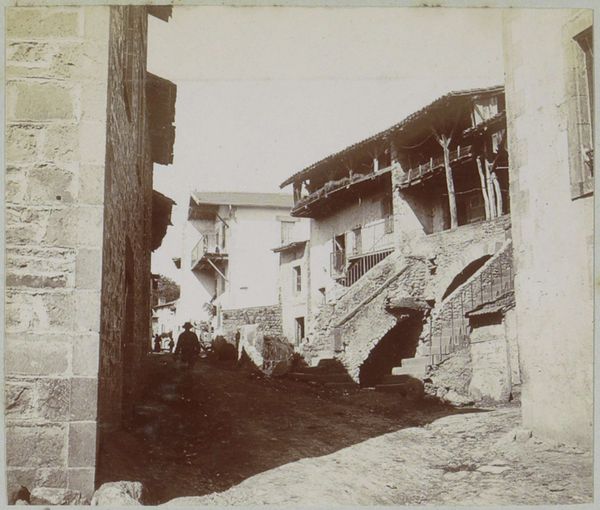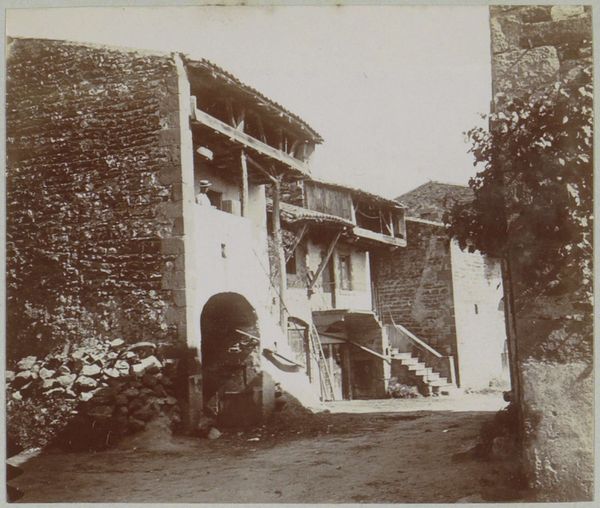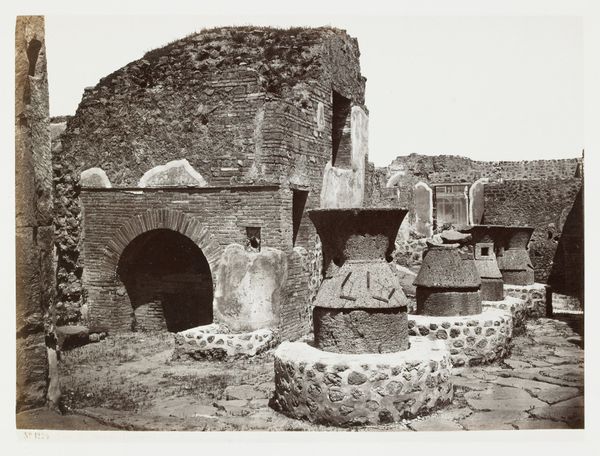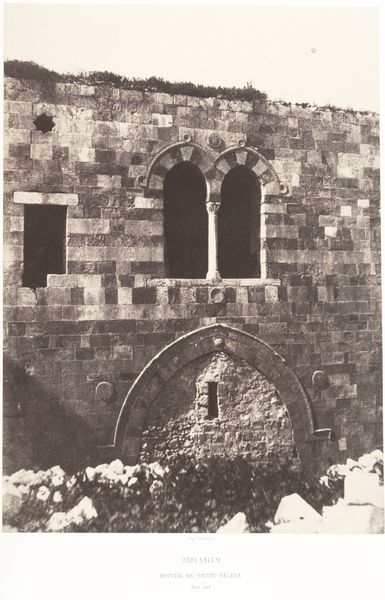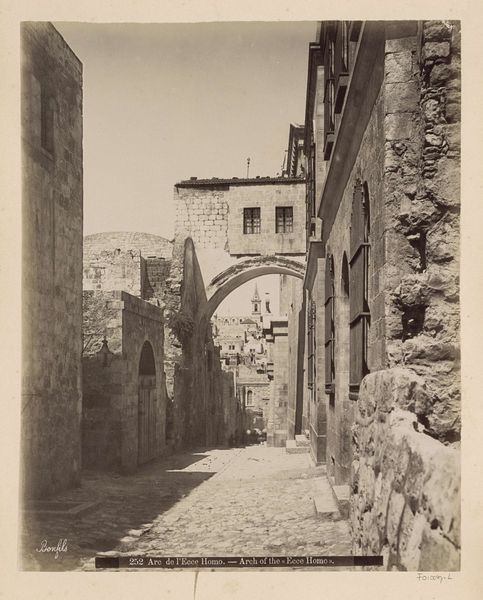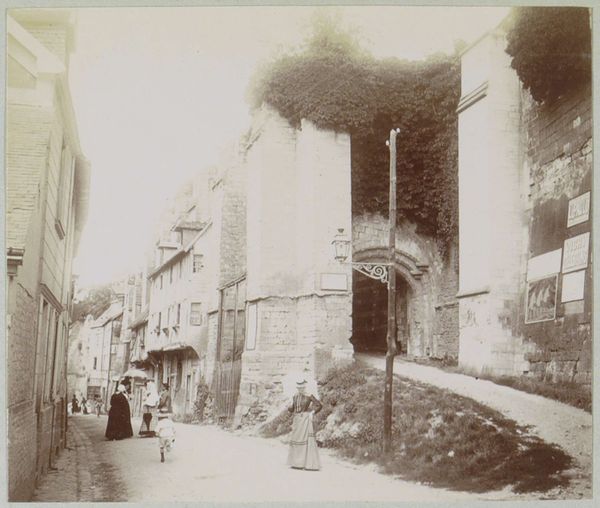
Dimensions: 17.3 × 23.8 cm (image/paper)
Copyright: Public Domain
Curator: This photograph, entitled "A Street in Sainte-Agnès near Roquebrune," was taken by Charles Nègre around 1865. It's a silver print, currently held in the collection of the Art Institute of Chicago. Editor: It feels like stepping back in time. There's a raw, almost ghostly quality to it. The narrow passage, the rough stonework, the shadows... It all seems to speak of a very different world. Curator: Indeed. Nègre was very interested in documenting rural France and everyday life in this period. Looking at it now, though, it really strikes me how the composition and print processes intersect here. The choice of silver print heightens the texture of those very aged stones, which emphasize a sense of age, labor, and time's slow passage through the very materials he is using to make this artwork. Editor: It’s also interesting to note how the city is portrayed and the implications of this street in the French Riviera. What was life like in this neighborhood and how does this image invite speculation or scrutiny of the people who called it home, based on these socio-political conditions? Curator: That is very thought provoking, when examining images such as these from a socio-historical and political lense! Charles Nègre often combined his artistic pursuits with more pragmatic ones. Editor: How so? Curator: Photography for him, and many at the time, also had the social role to classify aspects of France to modernize the State. Editor: That’s a different perspective on what may otherwise simply appear a serene image from France's past. And, in a modern art museum, that very past becomes another spectacle for today's viewers. Curator: It does underscore how essential it is to reflect on these issues, and appreciate the multi-layered contexts woven into this "Street in Sainte-Agnès," in order to understand all implications of these photographic representations and their modern place in our institutions.
Comments
No comments
Be the first to comment and join the conversation on the ultimate creative platform.
